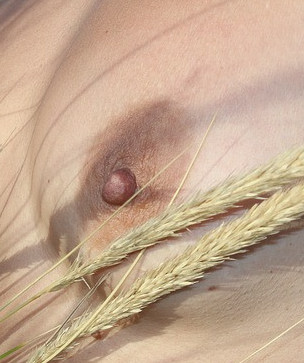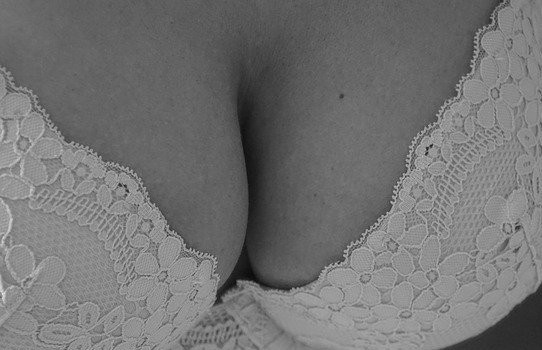The mammary gland
 The breasts represent one of the most remarkable organs that transforms exceedingly greatly in pregnancy. This transformation is most noticeable because of the pivotal position the breast occupies in the body and it’s relevance also in the successful establishment of the outcome of the pregnancy.
The breasts represent one of the most remarkable organs that transforms exceedingly greatly in pregnancy. This transformation is most noticeable because of the pivotal position the breast occupies in the body and it’s relevance also in the successful establishment of the outcome of the pregnancy.
On account of these tremendous changes that impacts the breasts, there is the need for you to know what you expect to see in your breast as pregnancy advances and what are the expected changes to be aware of as the postpartum period commences.
These changes are not hard and fast for every woman. Some women do not have noticeable changes and some do have remarkable changes that may require them seeking advice from their doctors for a remedy. Most of these changes are completely normal with some reversing back to normal following postpartum and some not reversing at all and still some regressing to a certain degree
In this article we will detail the eleven most common breast changes you will observe in the postpartum period and how they impact on the success of the postpartum period.
1 Breast Engorgement
The breasts increase in size during pregnancy in preparation for lactation and the postpartum period. The initiation of lactation and the subsequent milk let down has a remarkable effect on the distension and engorgement of the breasts with milk and as the baby commences suckling there is an associated increase in the engorgement of the breasts.
This engorgement can sometimes be associated with mild to moderate pain in the breast which will be resolved by simple measures like heat therapy – applying hot compress to the breast or taking a hot water bath. The use of ice packs can also ameliorate the pain. Mild analgesics may be needed in the event these measures fail.
The use of breast pumps to pump out the milk and store for later use by the baby will also help to reduce engorgement and the associated tenderness that it causes
2 Increased Vascularity
There are noticeable blue lines under the skin over the breasts in lactating mothers. This is due to the increased blood supply to the breasts in preparation for nursing so this increased vascularity starts in pregnancy and becomes more widespread over the breasts in the postpartum as they supply nutrients for the production of milk for lactation.
The increased vascularity and the bluish veins start to fade as lactation becomes well-established and will usually resolve over time with cessation of breastfeeding.
3 Color Changes
As with other changes in the body concerning melanin, melanocytes and pigmentation of pregnancy, the skin of the breasts notice a remarkable change in color as the pregnancy advances and also during the postpartum period with increased darkening of the skin and the nipples and the areolar area.
The color changes especially that involving the nipple and areola darkening may not improve with cessation of lactation and may become permanent and darkens more in subsequent pregnancies.
4 Size
The size of the breast increases as a result of the increased deposition of fat, the increase in the number of alveolar cells in the breasts, the increase in the water retention in the breasts and the production of milk by the breasts with lactation. The breasts can double or even triple from the prepregnancy size by the time a new mom starts lactating and breastfeeding the baby.
The increase in size of the breasts is very rapid within a few days after birth as it accommodates the breast production of milk and it’s associated fullness and engorgement to maintain lactation.
To cater to this enlarging breasts, you should wear a bra that is gentle and comfortable to the breasts. In the event you do not wish to breastfeed or you are trying to wean the baby off the breast you should change to a tight-fitting bra as it compresses the breast reducing the rate of milk production acting as a negative feedback to more milk production and suppressing the continued growth and increase in size of the breast.
5 Stretch Marks
Stretch marks develop on the breasts of pregnant and postpartum mothers as a result of the impact of weight gain especially sudden weight gain on the collagen and elastin component of the skin. It occurs in the breasts as in the tummy and buttocks as a result of the sudden weight gain and fat deposition at these places, it can occur in some people and not in others and there is some contribution from genetics to the development of stretch marks in pregnancy.
Stretch marks can be managed by appropriate weight gain in pregnancy and maintaining a healthy eating habit. Other measures also exist for handling stretch marks ranging from lotions and creams and supplements to laser therapy.
6 Milk Overflow
It is not uncommon to notice milk dripping from the breasts of lactating mothers. This is perfectly normal and is as a result of the alveolar glands of the breasts overfilling with milk and the sustained action of the myoepithelial cells that helps in expressing them out. The milk overflow is common in fully lactating mothers and can be stimulated by such actions like the cry of the baby, baby suckling on one breast, long interval after a feed and so on.
Milk overflow gradually subsides as lactation progresses steadily and the body starts adjusting production to the baby’s daily requirements, when you start supplementing the feed of the baby with artificial formulas and as the hormonal stimulation and milk let down reflexes start subsiding.
If leaking is a concern you can start wearing breast pads to absorb the leaking milk from the breast to prevent it from soiling your clothes.
7 Asymmetrical Breasts
Mothers can notice a significant difference in the size and shape of both breasts with one bigger than the other. This is not so evident before or during pregnancy but becomes marked as the lactation period ensues with the weight gains of the breast.
The difference in the breasts is as a result of the difference in the amount of breast tissue on each breast which becomes marked as the hormones of pregnancy act on them making the differences more elaborate and noticeable.
There is really not much you can do to affect the natural size of the breasts but by wearing appropriate sized and shaped bra you can minimize the difference in look of the breasts. The differences also become less prominent as breastfeeding is stopped and the breasts reduce in size.
8 Sagging Breasts
The sustained attacks on the breasts from the increase in weight of the breasts and breast tissue to the continuously engorged breasts, to the impact of the sustained suckling from the baby. These events will eventually have a toll on the breasts as the breasts supports like the ligament of Astley Cooper that keeps the breasts pointed and free on the chest are weakened and lost with all the above factors leading to saggy breasts.
Saggy breasts is one of the main things that affects a woman’s self-image and esteem and mothers can go to any length to find answers to a saggy breast and in some extreme cases some mothers may choose not to breastfeed at all out of this fear. Mothers who start off with big breasts are at a higher tendency to have a greater increase in breast sagginess and there is also a contribution made by heredity in the rate and scope of saggy breasts.
Correcting a saggy breast is not an easy endeavor and you can get assistance by the wearing of the correct bra size and type. For mothers that are predisposed to saggy breasts you can improve your lot by wearing bra always, using bra that has a feeding hole to continuously support the breasts throughout lactation, not breastfeeding the baby lying down to maintain correct posture. Massaging and exercising the breasts also helps.
9 Indurated Nipple
The growth of the breasts in pregnancy and lactation may outstrip the rate of growth of the nipple making the nipple to look buried within the mass of the breast leading to nipple induration. This is a very common problem in especially first time mothers and can lead to difficulties in initiating and maintaining lactation and successful breastfeeding.
Mothers should be conscious of the shape and growth of their breasts and nipples in pregnancy to ensure they are in pace and mothers should also maintain good breast hygiene to avoid infections setting in in the indurated nipple.
Nipple induration can be handled by the use of nipple shells applied to the nipple to make them retract outside and maintain the normal shape for proper lactation as the baby can’t latch to an indurated nipple. You can also continuously pull the nipple out daily when taking your bath and at other times if you notice nipple induration setting in to prevent it from being established which will be harder to address.
10 Pronounced Nipple and Areola
The nipple increases in size in tandem with the growth of the breasts and the areola area enlarges as the breasts grow in size aside from the much noticed darkening of the areola and nipple. There is also an increase of small noticeable bumps on the areola called Montgomery tubercles.
These changes in the nipple and areola are to enhance easy identification of the nipple by the baby with it’s reduced vision and sensory impulses for successful initiation and maintenance of lactation.
The changes in the areola and nipples will gradually normalize following lactation and aside the increased pigmentation that may stay, usually regresses to normal.
11 Differential Milk Flow
You may have noticed that the quantity of milk expressed from one breast is usually bigger than the other one in some mothers and this does not necessarily equate to the size of the breast. One breast may produce more milk than the other and this may be due to factors like the unconscious predilection to feed baby longer on one than the other breast leading that breast to pump more than the other. Moreover, one breast usually engorges more than the other one and the consistent stripping of milk from that breast will always fill it up more.
Differential milk flow is not a problem and can be handled by making a conscious effort to feed the baby on both breast at each feeding episode so both breasts get equal attention from the baby. You can also always attempt to feed the baby first on the disadvantaged breast before putting the baby to the engorged one so that it enhances let down action on that breast.
The Beauty and The Breasts
Aside the uterus, the breasts are the next most important body organ involved in the event of childbirth and changes that affect the breast will ultimately affect the outcome of the success of breastfeeding and lactation and hence the success of the postpartum period.
The breasts are located on the female body in a vantage position that it attracts more attention than any other female body aside the face. This explains why it is of immense importance to mothers aside it’s breastfeeding functions as it is a great beauty asset and enhances self-image and self-esteem.
Most of the changes noticed in the breast postpartum are reversible with the termination of lactation, a remarkable feat about the breasts and it’s functionality and this feat should be taken in stride by the breastfeeding mom to progress her freedom and the health of her baby and herself.
Dr Mawa
To your postnatal health and freedom
mypostnatalmanagement.com
If you have any suggestions, comments or experiences you want to share about postpartum breast changes kindly use the comment box below.


